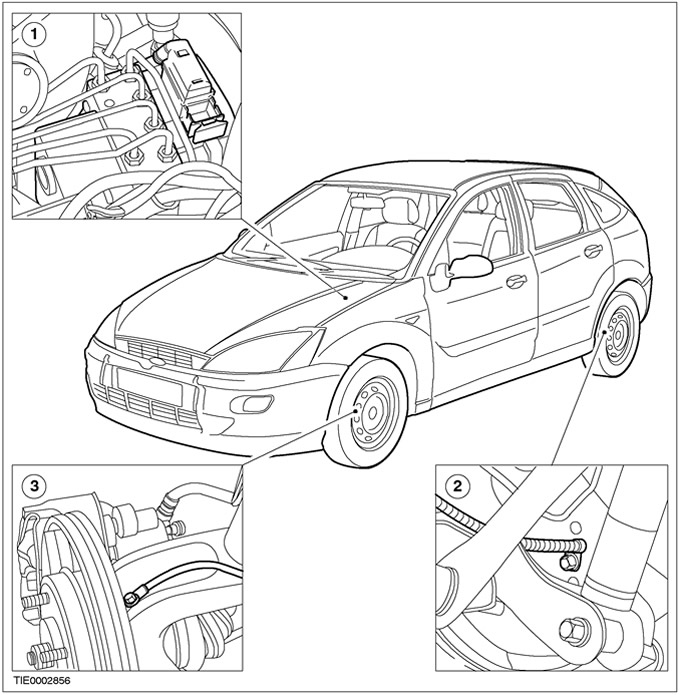WARNING: Brake fluid contains polyglycerol esters and polyglycerol. Avoid contact with eyes. Wash your hands thoroughly after handling brake fluid. If brake fluid gets into your eyes, rinse your eyes for 15 minutes with cold running water. If irritation persists, seek medical attention. If brake fluid is swallowed, drink water and induce vomiting. Seek immediate medical attention. Failure to follow these instructions may result in injury.
The anti-lock brake system functions as follows:
- Wheel locking under heavy braking is prevented by modulation (change) pressure in the brake system.
- The system in most cases allows the driver to maintain control of the steering and stop the car in the shortest possible way.
- During the operation of the anti-lock brake system, the driver feels the pulsation of the brake pedal and hears a clicking sound.
- The force applied to the brake pedal and the pedal feel during normal braking are similar to those experienced in a conventional brake booster system.
Hydraulic electronic control unit (HECU
)Hydraulic electronic control unit (HECU) is an integrated unit. The HECU consists of the following elements:
- hydraulic control unit (HCU), which includes an aluminum block containing solenoid valves and a pump motor
- electronic control unit (ECU), which includes a printed circuit board with microprocessors, firmware and solenoid coils to control the solenoid valves located in the HCU
The HCU and ECU are serviceable items, however none of these units are repairable.
Wheel speed sensors
The active wheel sensor system includes:
- four wheel speed sensors located on each wheel with small processors to send a digital signal to the ECU
- coding ring with magnetic profile
Electronic brake force distribution
Electronic brake force distribution (EBD) occurs in pressure sensitive control valves (PCRV), and in distribution valves that are sensitive to load changes (LAV), used in conventional brake systems and incorporated into all ABS/TCS systems.
The EBD function is an additional program (software), which complements the ABS program, which allows more efficient use of the rear brakes before the ABS system intervenes.
This function may be activated during normal braking, depending on the vehicle load and the coefficient of friction of the road surface.
Unlike PCR and LAV, during EBD operation, braking force is not determined by brake pressure or vehicle speed, but by wheel slip.

| Pos. | Spare Part No | Name |
| 1 | - | Hydraulic control box |
| 2 | - | Rear wheel sensor |
| 3 | - | Front wheel sensor |
Visitor comments